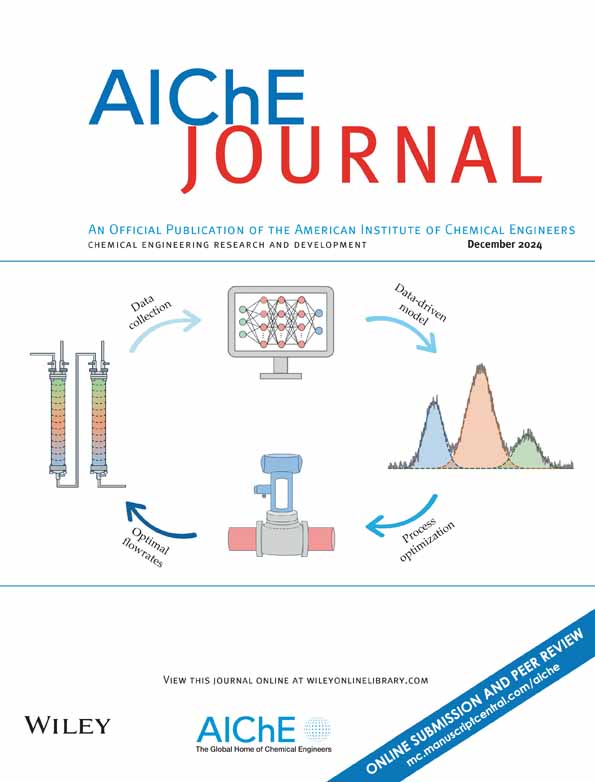Lewis acid-driven interlayer shifting in sub-nm 2D covalent organic framework membranes for hydrogen purification
IF 3.5
3区 工程技术
Q2 ENGINEERING, CHEMICAL
引用次数: 0
Abstract
Covalent organic framework (COF) membranes are promising for eco-friendly separations, but precise control of pore size at the angstrom level has been challenging, limiting their application in gas separation. This study introduces a pore redistribution method to reduce pore size to the sub-nanometer range in single-phase COF membranes. Using a Lewis acid (YbCF3(SO3)3) as the catalyst, interlayer shifting in 2D COFs was observed, which accelerates imine formation and weakens interlayer stacking forces. The pore size was engineered from >1.0 to ~0.6 nm. The optimal membrane achieves a competitive H2 permeance of 2253 gas permeation units (GPUs) and a high H2/CO2 selectivity of 21.6 in a binary equimolar gas test at room temperature, outperforming other one-phase COF membranes and exceeding the 2008 Robeson upper bound. This approach offers an effective strategy for engineering microporous materials for gas separation and other applications.用于氢气纯化的亚纳米二维共价有机框架膜中的路易斯酸驱动层间移动
共价有机框架(COF)膜在环保分离方面很有前景,但在埃水平上精确控制孔径一直是一个挑战,限制了它们在气体分离中的应用。本文介绍了一种孔径重分配方法,将单相COF膜的孔径减小到亚纳米级。以Lewis酸(YbCF3(SO3)3)为催化剂,观察到二维COFs的层间移位,这加速了亚胺的形成,减弱了层间的堆叠力。孔径设计范围为1.0 ~0.6 nm。在室温下的二元等摩尔气体测试中,最佳膜的H2渗透率为2253个气体渗透率单位(GPUs), H2/CO2选择性为21.6个,优于其他单相COF膜,并超过2008年Robeson上限。这种方法为气体分离和其他应用的工程微孔材料提供了有效的策略。
本文章由计算机程序翻译,如有差异,请以英文原文为准。
求助全文
约1分钟内获得全文
求助全文
来源期刊

AIChE Journal
工程技术-工程:化工
CiteScore
7.10
自引率
10.80%
发文量
411
审稿时长
3.6 months
期刊介绍:
The AIChE Journal is the premier research monthly in chemical engineering and related fields. This peer-reviewed and broad-based journal reports on the most important and latest technological advances in core areas of chemical engineering as well as in other relevant engineering disciplines. To keep abreast with the progressive outlook of the profession, the Journal has been expanding the scope of its editorial contents to include such fast developing areas as biotechnology, electrochemical engineering, and environmental engineering.
The AIChE Journal is indeed the global communications vehicle for the world-renowned researchers to exchange top-notch research findings with one another. Subscribing to the AIChE Journal is like having immediate access to nine topical journals in the field.
Articles are categorized according to the following topical areas:
Biomolecular Engineering, Bioengineering, Biochemicals, Biofuels, and Food
Inorganic Materials: Synthesis and Processing
Particle Technology and Fluidization
Process Systems Engineering
Reaction Engineering, Kinetics and Catalysis
Separations: Materials, Devices and Processes
Soft Materials: Synthesis, Processing and Products
Thermodynamics and Molecular-Scale Phenomena
Transport Phenomena and Fluid Mechanics.
 求助内容:
求助内容: 应助结果提醒方式:
应助结果提醒方式:


